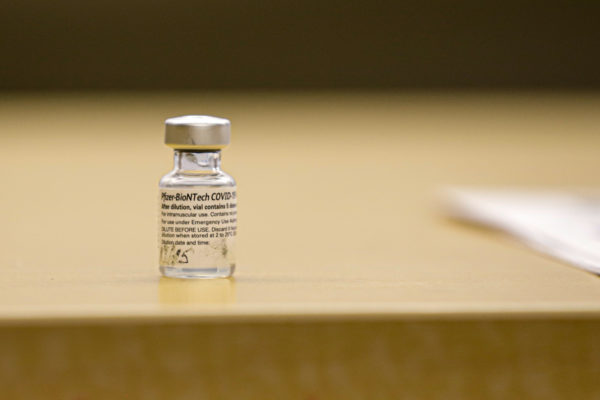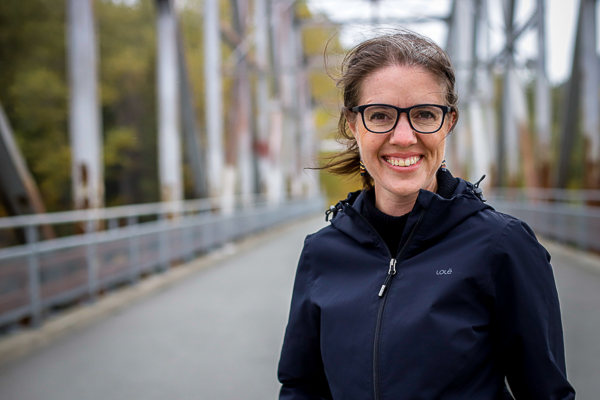
Editor’s note: Alaska Public Media published an open letter in response to criticism about this story. You can read the letter here.
Original story:
Anchorage’s main tribal health provider is vaccinating employees of its affiliated for-profit company and nonprofit organizations, and their household members, without regard to their race, age or vulnerability. That’s frustrating some of the teachers, people with underlying conditions and others enduring an excruciating wait for shots from state government.
Southcentral Foundation has access to special vaccine shipments from the federal government, which has designated tribes as sovereign jurisdictions with their own authority over how to prioritize doses.
SCF first opened vaccinations to its oldest Alaska Native “customer-owners,” then expanded them to successively younger groups before giving access to customer-owners 16 and over.
In recent days, SCF has also allowed customer-owners’ and employees’ household members to be vaccinated, regardless of their age or race. And it’s opened shots to workers at CIRI, the Alaska Native-owned regional for-profit corporation, along with related nonprofit organizations, like Cook Inlet Tribal Council and Cook Inlet Housing Authority, which collectively employ hundreds of people.
SCF is simultaneously developing plans to give shots to people at Anchorage homeless shelters, who currently lack access under the state’s framework for prioritizing vaccines.
But the foundation’s decision to allow vaccinations for younger, healthy people whose jobs don’t place them at high risk of catching COVID-19 has generated tension in recent days. Some who qualified said they wondered whether someone more vulnerable should have been next in line, and public health experts and advocates questioned why SCF wasn’t prioritizing higher-risk populations.
Related: Alaska’s Pacific Islanders are being hit hard by COVID-19. But they aren’t getting vaccinated.
Jan Carolyn Hardy, a board member of an Anchorage advocacy organization called Older Persons Action Group, said she thinks that instead of vaccinating healthy CIRI and nonprofit employees, SCF should be giving those shots to groups like teachers, grocery store workers and the elderly.
“We need to vaccinate these folks first, because they are at risk, and by gosh, we need them,” Hardy said. “I applaud the Native corporations and the Native associations — I’ve worked for them, and think the world of them. But we are all here together.”
So far, SCF says it’s given more than 10,000 shots — a significant share of the 91,000 people vaccinated statewide.
In the early stages of its distribution, SCF created teams of people that made thousands of phone calls to offer the vaccine to Alaska Native elders, said April Kyle, the foundation’s interim chief executive.
SCF is still focused on Native elders, prioritizing same-day access for those who might not have been willing to get the shot when it was first available, Kyle said. But at the same time, it’s trying to make sure that it’s quickly getting vaccine doses into people’s arms, she added.
“Unless we get our supply out, we put at risk our ability to receive future supply,” she said. “We need to keep it moving into the community, and that’s our charge — and I think we’re doing a pretty exciting job.”
The tribal vaccine shipments have brought more than 35,000 doses to Alaska so far — more than 30% of the state’s total. Both state and Native leaders have said there’s a sound legal and medical basis for the separate shipments, given tribes’ federally recognized status as sovereign governments and the COVID-19 pandemic’s disproportionate impacts on Alaska’s Indigenous people.
Tribal providers can administer their vaccines to Native or non-Native residents. And in some rural regions with smaller populations, they’ve received enough doses to expand access far beyond what’s offered by the state, which is limiting vaccine mainly to elders and frontline health-care workers.
But in those rural areas, tribal organizations still opened vaccinations in steps that hewed largely to federal and state guidelines, which call for health-care personnel, older people and essential workers to be vaccinated first, then the general population.
In Southwest Alaska, for example, Yukon-Kuskokwim Health Corp. began by giving shots to its frontline health-care workers and people in nursing homes. Then, it vaccinated other essential workers like teachers, along with people over 65, before ultimately opening to anyone 16 and older.
But in Anchorage, by offering doses to affiliated corporate employees and its workers’ household members regardless of age or race, Southcentral Foundation’s vaccination framework has the effect of skipping over groups that face higher risk levels. That’s because the city’s essential workers, like teachers, are still barred from signing up to get the shots distributed by the state government, which is first trying to finish vaccinating Alaskans 65 and older.
The state’s vaccination criteria were designed to prioritize people who had the highest level of exposure to COVID-19, and those who had the highest risk of serious illness or death from the disease, said Dr. Anne Zink, the state’s chief medical officer.
She said it’s up to SCF how to distribute their supply of vaccine. But she added that the state is available to help providers in efforts to give out doses and make sure they’re equitably distributed.

“I feel really bad for the Pacific Island population,” Zink said. “They also have gotten hit really hard, but they don’t get a separate allocation and supply.”
Ethical decisions are difficult and take time to work through, and the ones around vaccine prioritization pose a “huge challenge,” said Stephanie Bauer, a bioethicist at University of Alaska Anchorage.
The government and tribal entities charged with those decisions are being asked to distribute vaccines both quickly and fairly — two principles that can sometimes be at odds with each other, Bauer said.
For Alaskans frustrated by ethical decisions like SCF’s, she added, it can be helpful to look at the question from both sides: The foundation is being asked to make difficult choices quickly, in the middle of a pandemic that’s already stressing its capacity.
“Does this particular case test our trust in the fairness of this overall system? It doesn’t raise all the red flags for me,” she said. “But I can see how some reasonable people may have questions about it — and so the conversation begins.”
Nathaniel Herz is an Anchorage-based journalist. He's been a reporter in Alaska for a decade, and is currently reporting for Alaska Public Media. Find more of his work by subscribing to his newsletter, Northern Journal, at natherz.substack.com. Reach him at natherz@gmail.com.




